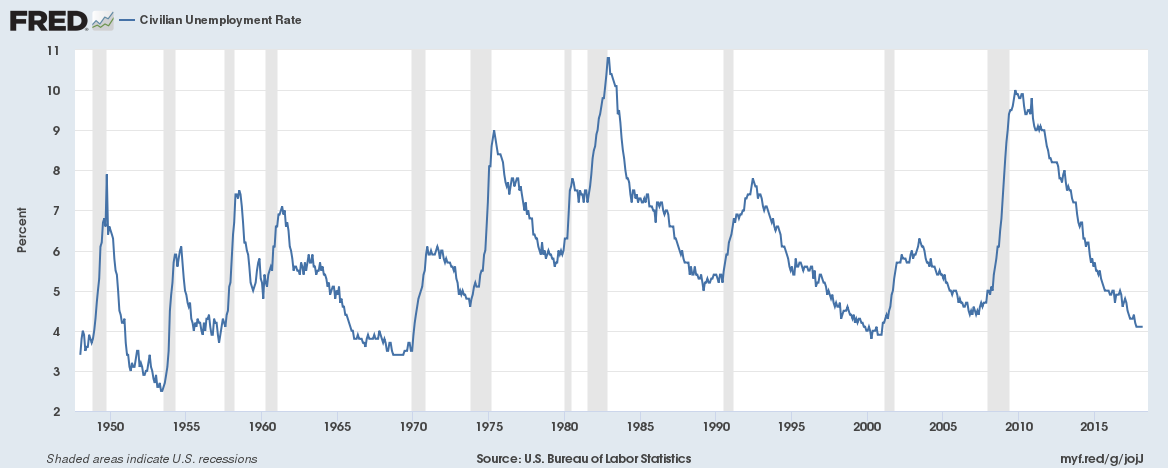The US Bureau of Labor Statistics data reveals that the US unemployment rate has a hit a new multi-year low four to eight months before the start of every recession since the 1940s. In other words, the economy hits full employment four to eight months before the start of a recession.
The graph below might help visualise it better (the shaded areas indicate recessions),

Why does this matter now?
US employers added only 103,000 jobs in March as against 185,000 new jobs expected by economists surveyed by Bloomberg. Jobs have been added for 90 straight months, the longest phase on record. January’s job addition number was revised sharply downwards from 239,000 to 176,000 whereas February’s job addition number was revised upwards from 313,000 to 326,000. The unemployment rate remains at 4.1%
Any addition of under 80,000 new jobs a month would cause the unemployment rate to rise. And going by past data, four to eight months of a rising unemployment rate is an indicator of a looming recession. Or perhaps this time it is different, and the rate of employment could keep rising or rising unemployment won’t cause a recession.